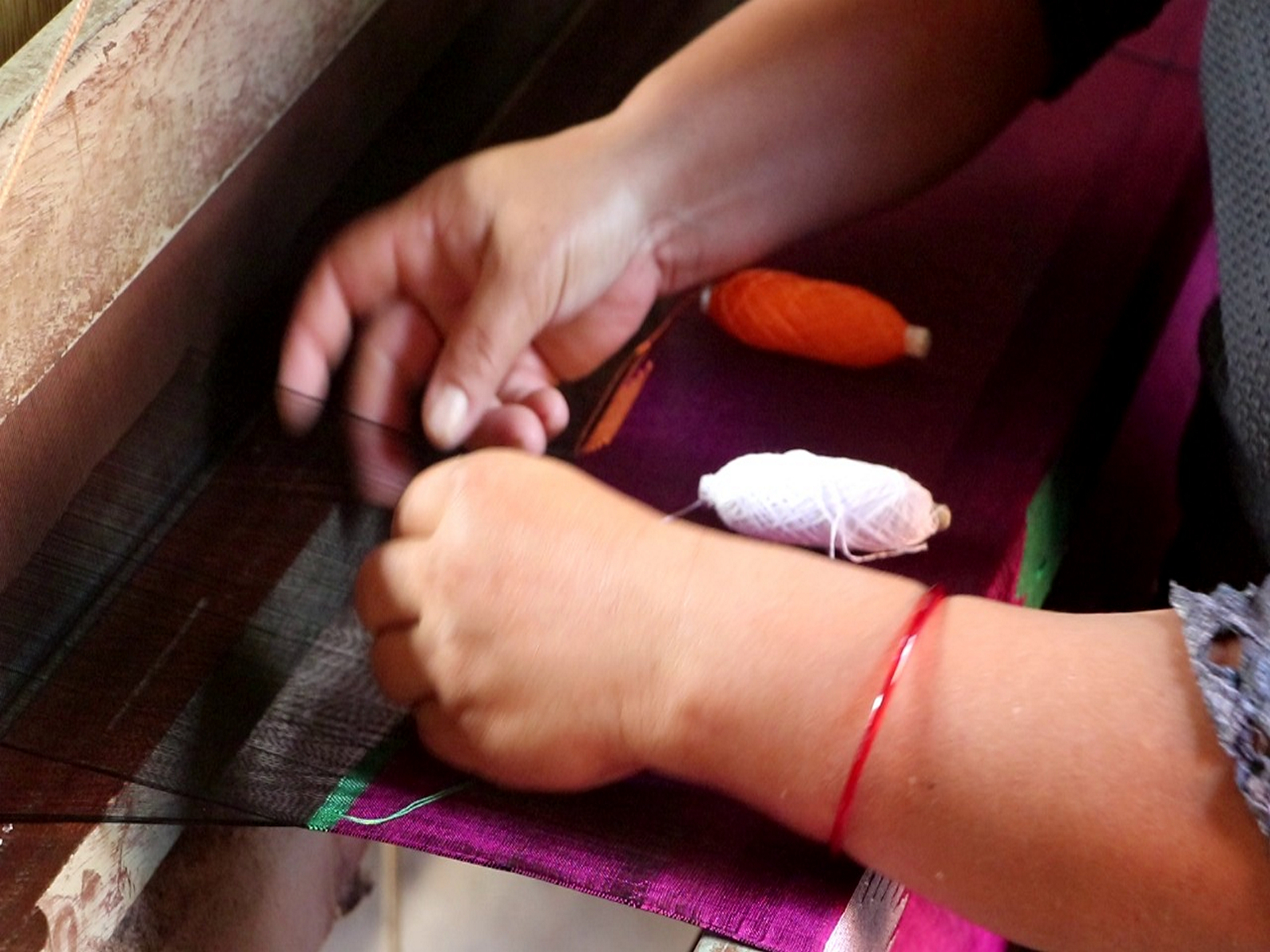Palpa [Nepal], November 10 (ANI): Fine, soft, and colourful with a unique geometric pattern, the traditional hand-spun fabric known as Dhaka continues to hold a special place in Nepal’s cultural and changing fashion landscape.
Originating from the western Nepali district of Palpa, this centuries-old textile, famously called Palpali Dhaka, has retained its charm even amid changing fashion trends.
“It is hand-woven, and the price differs from that of the other clothes, which also pushes up the price. For carrying distinct qualities, the demands are high in the market,” Manoj Raj Sharma Poudyal, an entrepreneur in Tansen, Palpa, told ANI.
Although Dhaka is also produced in Terhathum, Palpa is widely recognised as the capital of this traditional textile art.
Folklore links the name ‘Dhaka’ to the Bangladeshi capital. According to one popular belief, Dambar Kumari, the daughter of Prime Minister Junga Bahadur Rana, who lived in Banaras (Varanasi) during the 19th century, was fond of a fine and colourful fabric known as Chamua Dhaka, woven in Dhaka (now in Bangladesh). She began using it for her dresses, setting a fashion trend among the women of Nepal’s royal court, especially Rana ladies.
The fabric soon became known as “Dambar Kumari Dhaka”, which later spread widely across the Kathmandu Valley, and everyone referred to it as simply ‘Dambar Kumari’.
“Palpali Dhaka is renowned across Nepal. It is not limited to Nepal, but also found in other countries. Whenever I go abroad, I usually take traditional caps, shawls, jackets, and coats as gifts and mementoes. The Palpali Dhaka is fine and very popular as well,” Ved Prasad Pandey, a domestic tourist who has been using the textile products and buying some for his relatives, told ANI.
Located about 280 kilometres from Kathmandu, Palpa has a long history of hand-woven textiles made on wooden looms built from local pine trees, known as Tangsing in the Magar language. The modern form of Palpali Dhaka emerged in 1958, when local weaver Ganesh Lal Maharjan, considered the pioneer of the Dhaka textile, learned to use a one-handed loom in India. Inspired by the Dambar Kumari Dhaka fabric, he began weaving a similar cloth in Palpa.
By 1967, his product caught on as ‘Palpali Dhaka’. The attractively coloured, beautifully patterned fabric began to be widely used for a range of items, including caps, shawls, blouses, daura suruwal (the national dress of Nepal), as well as innovative gift items.
Initially made from cotton yarn, the fabric later evolved to incorporate acrylic yarn, resulting in a shinier finish. While Palpa once enjoyed a monopoly over Dhaka production, other districts later joined in.
“It is very close to Nepali people because this is our own product and is unique among other people. We are now planning to develop it as an international product and have been branding it as the ‘Palpali Brand’. We will be doing marketing at the international level as well as the national (domestic) market,” Sagar Man Maharjan, one of the oldest Dhaka businesses in Tansen, Palpa, told ANI.
Over time, Dhaka has transformed from a traditional everyday fabric to a modern fashion statement. Once used mainly for toppers (caps), shawls, and chaubandi cholo (traditional blouses), it is now also used in marriage ceremonies as part of fashion.
The Daura Suruwal, the national dress of the Himalayan nation, made from Dhaka, is worn by grooms during marriage, along with a pair of shoes and a cap. Meanwhile, the bride wears the cholo, stoll, as well as a pair of shoes during marriage. (ANI)
Disclaimer: This story is auto-generated from a syndicated feed of ANI; only the image & headline may have been reworked by News Services Division of World News Network Inc Ltd and Palghar News and Pune News and World News
HINDI, MARATHI, GUJARATI, TAMIL, TELUGU, BENGALI, KANNADA, ORIYA, PUNJABI, URDU, MALAYALAM
For more details and packages
















